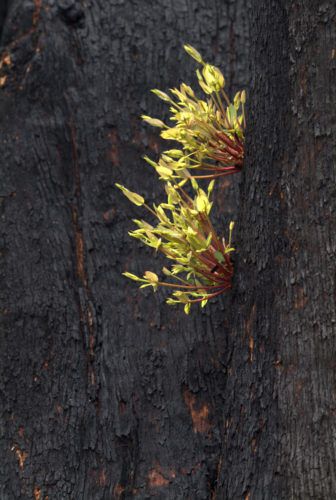
FIRE-damaged trees and half-burnt logs left behind by a fire are valuable habitat for recovering wildlife, according to a group of leading Australian environmental scientists.
Professor David Lindenmayer from the Fenner School of Environment and Society at the Australian National University (ANU), says that as fires burn patchily, small unburnt patches, half-burnt logs and dead or fire-damaged trees are commonly left behind.
“Our research has demonstrated that these patches and remaining woody debris are very important to recovering wildlife populations,” he says.
“Wanting to do something constructive, people and organisations may sometimes feel an urge to clean these up, but resisting this urge can be one of the best things people can do for wildlife.”

Professor Lindenmayer has more than 35 years of experience researching the effect of fire on Australian wildlife and ecosystems, including studying the recovery of wildlife after the Black Saturday fires in 2009 and major fires in coastal New South Wales in 2003.
“We have found that when burnt areas contain small unburnt patches – even as small as a single surviving tree – it helps an area recover much faster,” he says.
“The unburnt patches and surrounding unburnt areas are an important source of animals to repopulate burnt areas, and they also offer essential food and shelter until burnt areas recover.
“It is important to protect any of these remaining patches by not clearing them, and ideally to manage pest animals and weeds around these areas.”
In some cases, fires are so hot that they burn even the seeds in the soil, and then unburnt patches become essential sources of seed for native vegetation to re-establish.

“Standing fire-damaged trees as well as dead trees and fallen logs also provide many resources to surviving and recovering wildlife such as food, shelter and breeding hollows,” says Professor Lindenmayer.
“Many trees that look dead will still be alive. In the months ahead, buds will sprout from under the blackened bark.
“Of course where something is a hazard, like a dead tree close to a road, the hazard needs to be managed, but this could involve felling the tree and leaving it onsite for the benefit of wildlife.
“At a time when habitat is so scarce, practices like burning or mulching remaining timber, salvage logging and mop-up burning rob landscapes of the features that wildlife will need to recover.”
Who can be trusted?
In a world of spin and confusion, there’s never been a more important time to support independent journalism in Canberra.
If you trust our work online and want to enforce the power of independent voices, I invite you to make a small contribution.
Every dollar of support is invested back into our journalism to help keep citynews.com.au strong and free.
Thank you,
Ian Meikle, editor





Leave a Reply